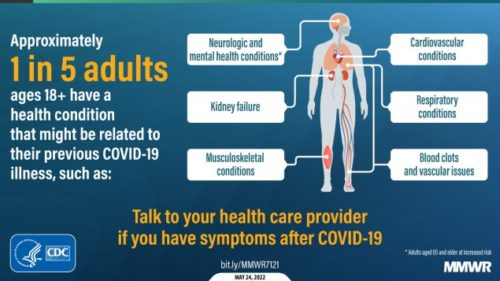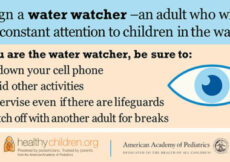May 31st, 2022
This week, Allegheny County and 27 other counties in Pennsylvania find themselves hosting “high” community levels of COVID-19, according to CDC surveillance data.
The United States experienced a steady rise of COVID-19 illnesses during the month of May, with the highest increases seen in the Northeast, Upper Midwest, and Florida. Infectious disease experts blame the springtime emergence of Omicron subvariants BA.2 and (more recently) BA.2.12.1, waning immunity from infection after vaccination and prior infections, and the lifting of mask mandates and other precautionary restrictions.
Near the end of May, BA.2.12.1 became the dominant strain in the U.S., accounting for nearly 60% of new cases diagnosed (66% in Pennsylvania, according to Allegheny Alerts). BA.2.12.1 is the most contagious variant of SARS-CoV-2 yet. Fenit Nirappil and colleagues expect problems after the warm and festive Memorial Day weekend:
“This one is really revved up, and it’s probably getting up there with something as transmissible as measles,” said Peter Hotez, dean of the National School of Tropical Medicine at Baylor College,describing the BA.2.12.1 subvariant now accounting for more thanhalf of new cases. “Over the Memorial Day holidays, if you are in settings where you are indoors with large numbers of people without masks … there is a good likelihood you will suffer a breakthrough infection.”
It’s become clear that being vaccinated and boosted provides most people protection from getting seriously ill with coronavirus, even if it doesn’t prevent the infection entirely. People who remain unvaccinated or unboosted, and those who are elderly or who have underlying health conditions are still at significant risk for serious adverse outcomes.
For every adult and child — vaccinated, partially vaccinated, and unvaccinated — long-COVID is an outcome worth avoiding at all costs. Last month we discovered on The PediaBlog that approximately 30% of adults and 25% of children developed long-COVID symptoms lasting at least 4 to 12 weeks after infection. In a study published last week, researchers from the CDC found that adults who had COVID-19 had twice the risk of developing pulmonary embolism or respiratory problems. 1 in 5 adults (20%) over the age of 18 were found to have chronic health conditions involving the nervous system, kidneys, musculoskeletal system, cardiovascular and respiratory systems, and mental health — most likely related to their COVID-19 infection. (See graphic above.)
Being vaccinated and boosted significantly reduces the risk of developing long-COVID symptoms and death following a breakthrough infection, although it doesn’t eliminate the risk entirely, according to another study published last week in Nature Medicine. Molly Walker spoke to one of the study’s authors:
“Getting COVID-19, even among vaccinated people, seems almost unavoidable nowadays,” Al-Aly said in a statement. “Now that we understand that COVID-19 can have lingering health consequences even among the vaccinated, we need to move toward developing mitigation strategies that can be implemented for the longer term since it does not appear that COVID-19 is going away any time soon.”
One very important mitigation strategy would be to make sure everyone gets vaccinated against coronavirus. Children under 5 have so far not been eligible to receive the vaccine. That’s about to change, Katia Hetter reports:
Pfizer and BioNTech announced Monday that three doses of their vaccine were safe and produced a strong immune response in children 6 months to 5 years old.
This followed Moderna’s earlier announcement about its two-dose vaccine being safe and producing a good immune response in young children.
The US Food and Drug Administration is considering Moderna’s application for emergency use authorization of its vaccine for this youngest age group and will also be considering Pfizer’s soon.
You might remember that Pfizer delayed its application for authorization in kids under 5 because 2 doses of the vaccine did not induce a strong enough immune response. Last week Pfizer released data showing that giving a third dose was well-tolerated and resulted in strong protection. For youngsters participating in the clinical trial during the Omicron surge, a trio of 3 microgram doses was 80% effective in preventing COVID-19.
Health and vaccine experts at the FDA are scheduled to examine all the evidence from Moderna’s and Pfizer’s clinical trials on June 15. After that, a positive recommendation will be forwarded to the CDC for its consideration. With any luck, we may by the end of June finally have a safe and effective vaccine for kids ages 6 months to 5 years old against a pandemic virus that has killed more than one million Americans in just under two years, and seriously sickened many millions more. As we remember that many of the pandemic’s survivors have not yet recovered months after their infections resolved, we must acknowledge that vaccinating young children will help protect everyone — and vice versa.




































